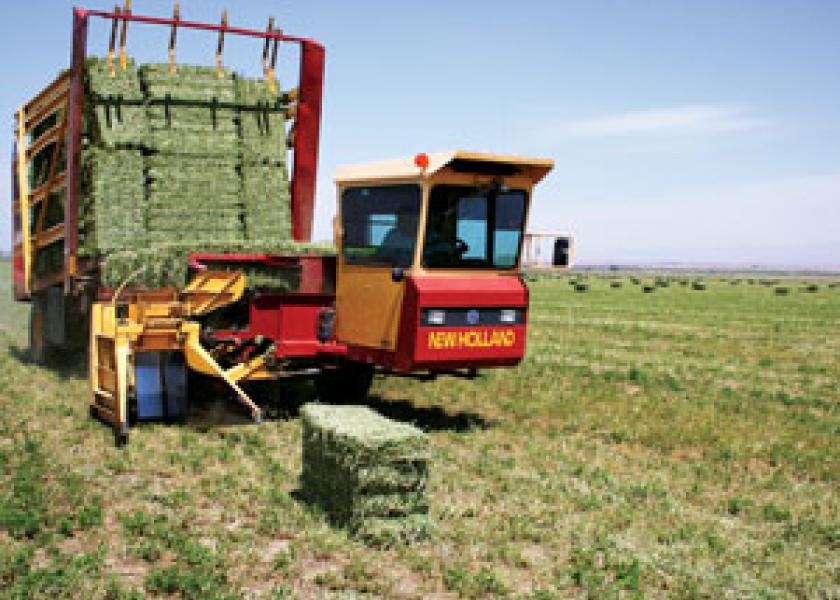Game Changer

Alfalfa’s value is energy, not protein
For years, most dairy producers have looked at alfalfa as a cheaper source of protein than soybean meal, with some energy and ruminal benefits thrown in. But $7 corn—or whatever it will be this year—changes all that, says Bill Weiss, an Extension dairy specialist with The Ohio State University (OSU).
The 10-year average for energy value is about 5¢ per megacalorie (Mcal). Today, with ethanol, exports and drought, that value is three to four times higher.
Even with $5 corn, the value of average hay priced at $245 per ton breaks down this way: energy, $177; protein, $61; neutral detergent fiber (NDF), $7. "The value of alfalfa is energy, not protein," Weiss says.
Keep in mind that plant proteins metabolize differently in the rumen. While soybean protein is 70% metabolizable and distillers’ grain protein is 65% metabolizable, alfalfa comes in at about 55%.
|
| |
This new way of thinking about alfalfa has implications for cutting management. Because younger-cut alfalfa is higher quality, it is often thought that a four-cut system yields more value per acre per year than a three-cut system. But when you cut more frequently, you sacrifice yield and, potentially, stand life. You also increase weather risk.
Dianne Shoemaker, an Extension field specialist at OSU, compared three- and four-cut production records dating back to 2005. She found that the three-cut system produced greater gross returns per acre even after adjusting for harvest costs. The four-cut system produced better quality, but the three-cut system produced greater tonnage—and more dollars.
"While we would like to make 100% of the four-cutting hay at the optimum time, even in a well-managed system, weather will interfere," she says.
The comparison used the average of 11 alfalfa varieties harvested at a Wooster, Ohio, test plot in 2011. Four-cut alfalfa averaged 5.84 tons per acre of dry matter and was 60% good quality (40% NDF) and 40% fair quality (44% NDF). Shoemaker assumed three-cut alfalfa would yield 6.7 tons per acre (15% more) but be only fair quality.
"The three-cut system averages $50 per year more in gross returns per acre less harvest costs, even though 60% of the four-cut was of higher quality and value," she says.
In a few of the past eight years, four-cut alfalfa put up at 40% NDF would have had an economic advantage. "Only if the four-cut haylage is harvested as a mix of good and premium quality does the system begin to show some advantage over three cuttings with higher yields harvested at 44% NDF," Shoemaker says.
The bottom line: "Under normal harvest conditions, a three-cutting system harvesting 15% to 20% more dry matter of good quality alfalfa hay or haylage nearly always generated more gross returns per acre, even when adjusted for harvest costs and potential milk production," Shoemaker says.







